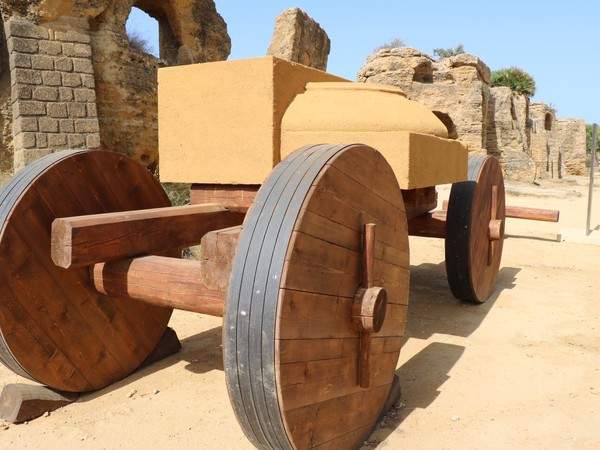How were temples built in ancient times? An exhibition in Agrigento's Valley of the Temples.
The Archaeological and Landscape Park of the Valley of the Temples in Agrigento, in collaboration with MondoMostre and CoopCulture, has created an educational exhibition that takes in the main historical-archaeological attractions of the Valley of the Temples, with an itinerary that begins at the so-called Temple of Juno and ends at Gate V, in front of the so-called Temple of the Dioscuri.
The exhibition, titled Building for the Gods. The Building Site in the Classical World and scheduled from June 12 to Nov. 30, 2019, is dedicated to the construction techniques used for the elevation of temple structures in the classical world, addressing in an educational and practical way problems and curiosities that arise in visitors of all ages when they stand in the presence of the sumptuous houses of the gods built during the golden century of the ancient Greek colony of Akragas.
The exhibition is designed to accompany visitors throughout the tour, developing a different theme at each stage with the help of working reproductions of construction and transportation machines in relation to the real thing, as described by ancient treatise writers or as reconstructed by scholars. The educational and documentary value of the exhibition is also conferred by the presence of 1:1 scale copies of various architectural stone blocks and partitions used in temples. Visitors will observe the different stages of development of a typical 5th century B.C. building site, from the quarry to the setting up and decoration of the lithic elements.
It starts from the area at the foot of the Temple of Juno, where two exhibits have been set up relating to the techniques of detaching blocks in the quarry and the techniques of transporting them, using means as ingenious as they are rudimentary.
The second stage, positioned along the Via Sacra at the height of the Arcosoli, reproduces machines used for transporting large blocks, such as wagons equipped for moving capitals.
The third stage, next to the Temple of Concord, reproduces a portion of the epistyle of a Protodoric temple, the wooden ancestor of Doric stone temples: this installation is made particularly evocative and didactic by the possibility of being able to compare the practical realization of a theoretical concept and to compare it with the stone temple: the didactic apparatus will explain in a simple and effective way how the lithification of temple structures took place from the 6th century BCE onward.C., also revealing the original function of the decorative apparatus shown on the epistyle. A short distance away, there is a display of two ingenious machines devised by the Greek architects Chersiphrones and Metagene, whose use in transporting blocks for the construction of large temples is historically attested by Vitruvius.
The lower tour itinerary is devoted to the setting up of the blocks by means of elevators, faithfully reconstructed according to Vitruvian descriptions, with a large working 12-meter crane set up in the area of the Temple of Zeus Olympius, and a second smaller and also working crane built close to the reproduction of a typical scaffold used by ancient workers to closely follow the proper assembly of the stone architectures, at every stage.
In addition, inside the Lizzi auditorium, an exhibition body in the museum complex area of the Regional Archaeological Museum of Agrigento “Pietro Griffo,” there is a section dedicated to the display of original ancient work tools, recovered from the excavations of Pompeii. This part of the exhibition is placed at the conclusion of the exhibition in the valley, and is completed with explanatory panels, models of some of the reproduced machinery, original editions of renowned texts and very rare but important plates to reconstruct architecture and polychromy of several Agrigento temple buildings.
To fully enjoy the exhibition, it is recommended to follow the tour route as it is designed, from the Temple of Juno to the Temple of the Dioscuri.
The exhibition has caption apparatus in Italian and English.
For all information you can visit the CoopCulture website or call +39 0922 1839996.
Source: press release
 |
| How were temples built in ancient times? An exhibition in Agrigento's Valley of the Temples. |
Warning: the translation into English of the original Italian article was created using automatic tools. We undertake to review all articles, but we do not guarantee the total absence of inaccuracies in the translation due to the program. You can find the original by clicking on the ITA button. If you find any mistake,please contact us.





























